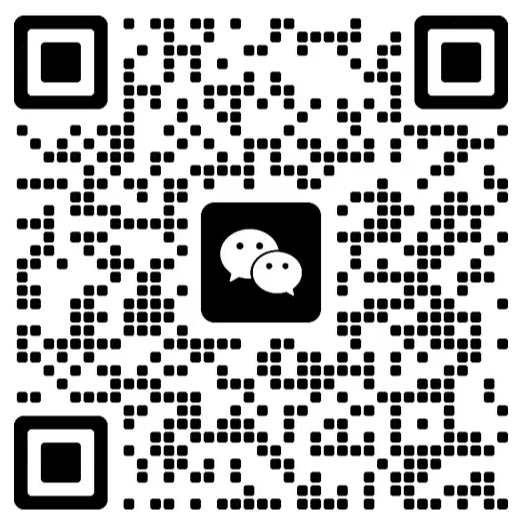云南话方言英语翻译(云南话方言英语翻译中文)
云南话方言英语翻译(云南话方言英语翻译中文),老铁们想知道有关这个问题的分析和解答吗,相信你通过以下的文章内容就会有更深入的了解,那么接下来就跟着我们的小编一起看看吧。
云南话方言英语翻译(云南话方言英语翻译中文)

Introduction:
As a land of diverse languages and dialects, Yunnan Province in China is well-known for its rich linguistic heritage. One of the most fascinating aspects of Yunnan's linguistic repertoire is the translation between Yunnan dialects, particularly Yunnan dialects and English. In this article, we will explore the challenges and techniques involved in translating Yunnan dialects into English, providing insights into the fascinating linguistic and cultural exchange between these two distinct linguistic systems.
Understanding the Yunnan Dialects:
Yunnan dialects, also known as Southwestern Mandarin, belong to the Sino-Tibetan language family and are widely spoken by the ethnic minority groups in Yunnan Province. These dialects exhibit unique phonetics, vocabulary, and grammar, which often pose challenges in translation. The distinct tonal system and pronunciation differences are essential considerations when translating Yunnan dialects into English.
Translating Yunnan Dialects into English:
When translating Yunnan dialects into English, it is crucial to maintain the essence and cultural nuances embedded in the original dialect. This requires a deep understanding of the dialect's idiomatic expressions, proverbs, and unique vocabulary. Professional translators well-versed in Yunnan dialects and English play a vital role in bridging the linguistic and cultural gaps.
Challenges and Techniques:
One of the main challenges faced in translating Yunnan dialects into English is the lack of direct equivalents for certain words and expressions. Yunnan dialects often employ vivid and picturesque descriptions, utilizing imagery and metaphors specific to local culture. Finding the right English words or phrases to convey these nuances is a meticulous task that requires creativity and a profound understanding of both languages.
Contrast and Comparison:
To illustrate the complexities involved, let's consider an example. In Yunnan dialects, a common phrase "食夜宵" (shi4 ye4 xiao1), which literally means "eat night snack," refers to the act of going out for a late-night bite. The challenge lies in finding the right English equivalent that not only conveys the action of eating but also captures the casual and relaxed ambiance associated with this cultural practice.
Another example is the Yunnan dialect phrase "撩拨" (liao1 bo1), which means to provoke or tease someone playfully. This term carries a sense of mischief and humor, making it challenging to find its equivalent in English without losing the playful connotation.
Conclusion:
Translating Yunnan dialects into English is a fascinating endeavor that requires a delicate balance of linguistic expertise, cultural understanding, and creative adaptation. It is an art that strives to capture the essence and authenticity of Yunnan's linguistic heritage. By bridging the gap between two distinct linguistic systems, translators play a crucial role in preserving and promoting Yunnan's rich cultural diversity.
云南话方言英语翻译中文

云南话方言英语翻译中文
Introduction:
With its rich cultural heritage and ethnic diversity, Yunnan province in China is home to various minority groups, each having its own unique dialects. Among these dialects, Yunnan dialect, also known as "Yunnan Hua" or "Yunnanese," stands out as a distinct and fascinating linguistic phenomenon. In this article, we will explore the challenges and techniques involved in translating Yunnan dialect into English, shedding light on the intricate process of bridging the gap between these two languages.
Exploring the Linguistic Landscape:
Yunnan dialect is deeply rooted in the local culture and plays a significant role in daily communication. Its distinctive features include phonetic variations, tonal nuances, and a rich vocabulary that reflects the cultural and historical heritage of the region. When translating Yunnan dialect into English, it is crucial to capture not only the meaning but also the essence of the language, allowing readers to experience the unique flavor and spirit of Yunnanese communication.
Translating the Untranslatable:
One of the biggest challenges in translating Yunnan dialect lies in the fact that it often contains words and expressions that do not have direct equivalents in English. These linguistic gaps require translators to adopt creative techniques, such as using descriptive phrases or adapting similar concepts from English or other languages. This approach ensures that the intended meaning is conveyed effectively while maintaining the originality and authenticity of the Yunnan dialect.
Comparing and Contrasting:
To better understand the intricacies of translating Yunnan dialect, it is helpful to compare and contrast it with other Chinese dialects and languages. For example, the tonal system in Yunnan dialect differs from Mandarin, requiring translators to carefully select appropriate intonation and stress patterns when rendering the dialect into English. By highlighting these differences, readers can appreciate the complexity and uniqueness of Yunnanese linguistic expressions.
Capturing the Cultural Nuances:
Translating Yunnan dialect is not only about conveying words and phrases; it also involves capturing the cultural nuances embedded within the language. Yunnan's diverse ethnic groups, such as the Bai, Yi, and Hani, have their own distinct cultural practices and beliefs, reflected in their dialects. To accurately translate Yunnanese expressions, translators must possess deep cultural knowledge and sensitivity, ensuring that the translated text accurately portrays the cultural richness and diversity of Yunnan province.
Conclusion:
Translating Yunnan dialect into English is an intricate and fascinating process that requires not only linguistic expertise but also cultural understanding. By effectively capturing the essence of Yunnanese communication, translators can bridge the gap between these two languages, enabling readers to appreciate the beauty and diversity of Yunnan dialect. Through their skillful use of techniques and their profound knowledge of both languages, translators can preserve the rich heritage and cultural identity embedded within Yunnanese linguistic expressions.
云南话日常方言大全

云南话日常方言大全
引言:
云南话是一门丰富多样的方言,是云南省本土的官方语言。其独特的音调、词汇和语法结构使其成为了独具特色的语言形式。本文将介绍云南话的日常方言,为读者提供了解云南话习俗和文化的机会。
一、早晨的问候
云南话的早晨问候方式多种多样,每个地区都有其独特的表达方式。在昆明,人们通常会用“吃了没有?”来问候别人一天的早餐情况。而在玉溪,问候方式则是“了卜卯喷?”意为“早上好吗?”。不同的地区,不同的问候方式体现出云南话方言的多样性。
二、家庭和亲属称呼
云南话对家庭和亲属的称呼非常讲究。在大部分地区,父亲被称为“阿爸”,母亲被称为“阿妈”。而云南的彝族地区,父亲被称为“爷爷”,母亲被称为“奶奶”。亲戚间的称呼也颇为复杂,比如兄弟姐妹之间的称呼有“阿哥”、“阿妹”等。这些称呼方式反映了云南丰富的民族文化和多元的家庭观念。
三、饮食文化
云南的饮食文化举世闻名,而云南话在描述美食方面也有其独特之处。云南话对食物进行形容时,常常使用形象生动的词汇。云南的火锅,云南话中被形容为“湯湯水水烫”,寓意汤水沸腾。而对于云南特色菜“过桥米线”,云南话中被描述为“湯湯水水面”,凸显了其特色和美味。
四、民俗习惯
云南话还有许多与民俗习惯相关的方言表达。云南有一项重要的传统节日——火把节,当地人常用“擸火把”来形容参与节日活动。在婚礼习俗中,新娘乘坐的花轿被称为“軒”,新娘所属的家族称为“親戚”。这些方言词汇融合了当地的风俗习惯,展示了云南方言的独特魅力。
五、商务用语
在商务场合,云南话也有其专属的语言表达。在谈判中,云南人善于使用“拼桌子”来形容商务合作的意愿,意为大家共同合作。而购物时,云南话中的“没巴士”指的是价格过高,不值得购买。这些商务用语不仅反映了人们对于交流的追求,也呈现出云南人独有的商业智慧。
云南话作为一门博大精深的方言,通过介绍云南话的日常方言,我们不仅可以了解其特色和多样性,更能够感受到云南丰富的地域文化。希望读者通过本文的阅读,对于云南话有更深入的了解,并对云南的风土人情有更真切的感受。
云南话方言英语翻译(云南话方言英语翻译中文)的问题分享结束啦,以上的文章解决了您的问题吗?欢迎您下次再来哦!
免责声明:以上整理自互联网,与本站无关。其原创性以及文中陈述文字和内容未经本站证实,对本文以及其中全部或者部分内容、文字的真实性、完整性、及时性本站不作任何保证或承诺,请读者仅作参考,并请自行核实相关内容。(我们重在分享,尊重原创,如有侵权请联系在线客服在24小时内删除)
为您的创意找到最好的声音
平台累计配音,超40,050,000 分钟
-
品质保证15年专注网络配音行业 500+国内外专业配音员
-
多种配音中文多场景配音 提供小语种配音
-
公司化运作提供正规发票 签订服务合同
-
双重备案工信部公安双重备案 取得文化经营许可证
-
7*14全天候服务公司实现轮流值班 9:00-21:00都有客服
推荐样音
更多收到您的极速试音需求
关注【客服微信】
听最新案例,新客礼包等你拿!
提交成功
试音顾问将在工作日半小时内联系您,请准备试音文稿或参考音频加速匹配
你也可以注册,可自助下单挑选主播,在线接单配音。(7 X 24小时主播接单)











